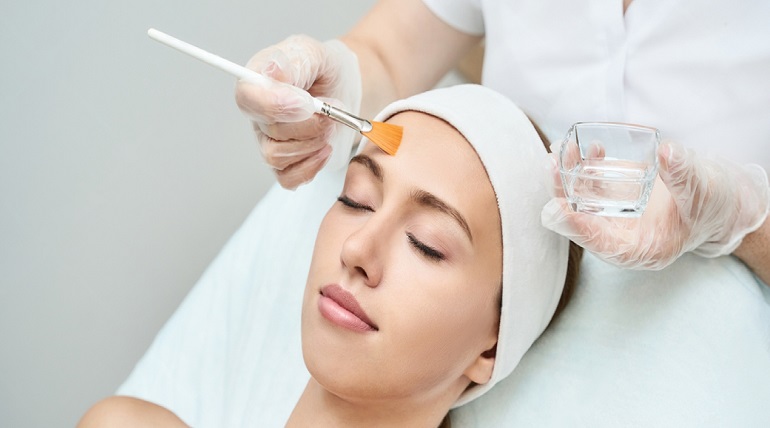
How to Treat Different Types of Acne

How to Treat Different Types of Acne
To treat acne effectively, it is important to know the kind of acne and the reasons behind it. There is no magic solution, and what suits one may not suit another. In the case of mild acne like whiteheads and blackheads, over-the-counter products with salicylic acid or benzoyl peroxide are usually sufficient to clear pores and minimize breakouts. Simple cleansing, mild exfoliation, and avoidance of pore-blocking products can also help a lot. Inflammatory acne in the form of papules and pustules might need stronger topical treatments such as retinoids or topical antibiotics to inhibit bacteria and inflammation. In cases of more severe forms such as nodules and cystic acne, professional care is usually the answer. Oral antibiotics, hormonal treatment (particularly in females), or even isotretinoin in extreme circumstances may be suggested by dermatologists.
Besides medication, healthier lifestyle options including a healthy diet, adequate fluid intake, management of stress, and regular adherence to a consistent skincare regimen may help facilitate healing. Also, refrain from popping or squeezing spots since this leads to scarring and aggravation of inflammation. In-office procedures such as chemical peels, laser treatment, or light therapy can also be recommended to help curb acne and enhance skin texture in the long term. Visiting a dermatologist will guarantee you are presented with a tailor-made regimen that is fit for your skin type and level of acne. Early and proper treatment not only resolves your skin but also stops permanent damage like dark spots and scarring. Knowledge about your acne and taking action quickly is the solution to obtaining healthier, clearer skin.
Choosing the right treatment depends on your scar type, skin tone, and how your skin heals.
1. Microneedling with DermaPen
Microneedling is a highly effective treatment for textural scars. With a device such as the DermaPen, the treatment makes controlled micro-injuries in the skin.
- How It Works
- Stimulates collagen and elastin production.
- Enhances overall skin texture and firmness.
- Decreases visibility of rolling and boxcar scars.
- Benefits
- Minimal downtime
- Ideal for most skin types
- Visible results after 3–6 treatments
2. AquaGold Fine Touch
This high-end, medical-strength treatment pairs microneedling with a blend of skin-supporting serums injected directly into the dermis.
- Key Ingredients Most Often Used
- Baby Botox to refine pores
- Hyaluronic acid to hydrate
- Vitamins to feed the skin
- Why It's Excellent for Acne Scars
- Increases skin renewal
- Smooths out irregular texture
- Leaves a glowing, more plumped finish
3. Fractional Laser Resurfacing
Fractional lasers pinpoint specific areas of the skin to drive deep healing without touching surrounding tissue.
- Treatment Highlights
- Promotes collagen rebirth from the inside out
- Great for pitted or indented scars
- Improves texture, fine lines, and pigmentation
- Types of Fractional Lasers
- CO2 laser (ablative)
- Fraxel (non-ablative)
- Recovery
- Mild to moderate downtime (2–5 days)
- Redness and peeling expected post-treatment
4. Subcision with Dermal Fillers
Subcision involves inserting a tiny needle beneath the scar to release the fibrotic strands tethering it to deeper layers. Often paired with fillers for better results.
- Ideal For
- Rolling scars
- Depressed boxcar scars
- What Makes It Effective
- Physically lifts indented scars
- Fillers add volume and smoothness
- Results can last for months or more
5. HydraFacial
HydraFacial is a non-surgical, multi-step facial that deeply cleanses, exfoliates, and hydrates the skin and delivers active ingredients.
- Why It's Perfect for PIH and Red Marks
- Gently addresses pigmentation over time
- Enhances hydration and luminosity
- Safe for sensitive or acne skin
- Treatment Frequency
- Monthly for optimal results
- No downtime, glow instantly
6. Chemical Peels
Chemical peels achieve their effect by peeling off the top layer of dead skin cells and inducing cell turnover.
- Types of Peels for Acne Scars
- Glycolic acid peels
- Salicylic acid peels
- TCA (trichloroacetic acid) peels
- Benefits
- Lightens dark spots and red marks
- Smooths rough texture
- Aids in fading acne-related pigmentation
- Aftercare Tip
- Apply SPF every day after the treatment to avoid re-darkening
7. LED Light Therapy
LED light therapy applies various wavelengths of light to treat specific skin issues. Red and blue light are especially beneficial in the treatment of acne scars.
- How It Helps
- Decreases inflammation and redness
- Increases collagen production
- Speeds up skin healing
- Why Add It to Your Routine
- Pain-free and calming
- Perfect as a post-treatment recovery booster
- Suitable for all skin types
8. PRP (Platelet-Rich Plasma) Therapy
PRP utilizes your own blood's platelets and growth factors to aid in healing and tissue remodeling. Frequently paired with microneedling.
- Acne Scar Benefits
- Strengthens microneedling outcome
- Triggers natural repair of the tissue
- Smooths out skin tone and elasticity
- What to Expect
- Puffy or reddish skin for 1–2 days
- Long-term changes over several sessions
Rationales for Choosing Bollin Clinic UK for Acne Treatments
We offer custom treatment plans and strive to meet our patient's needs at Bollin Clinic UK. Our clinics have integrated specialized acne treatment into advanced skincare solutions, often used for different skin types and severities due to acne. Bollin Clinic UK provides care, starting from the first consultation, subsequent treatment and maintenance visits. Comfort, safety, and self confidence throughout the entire process is essential.
